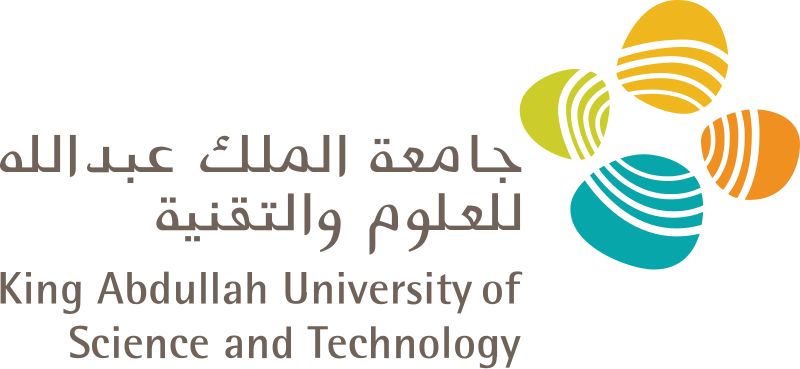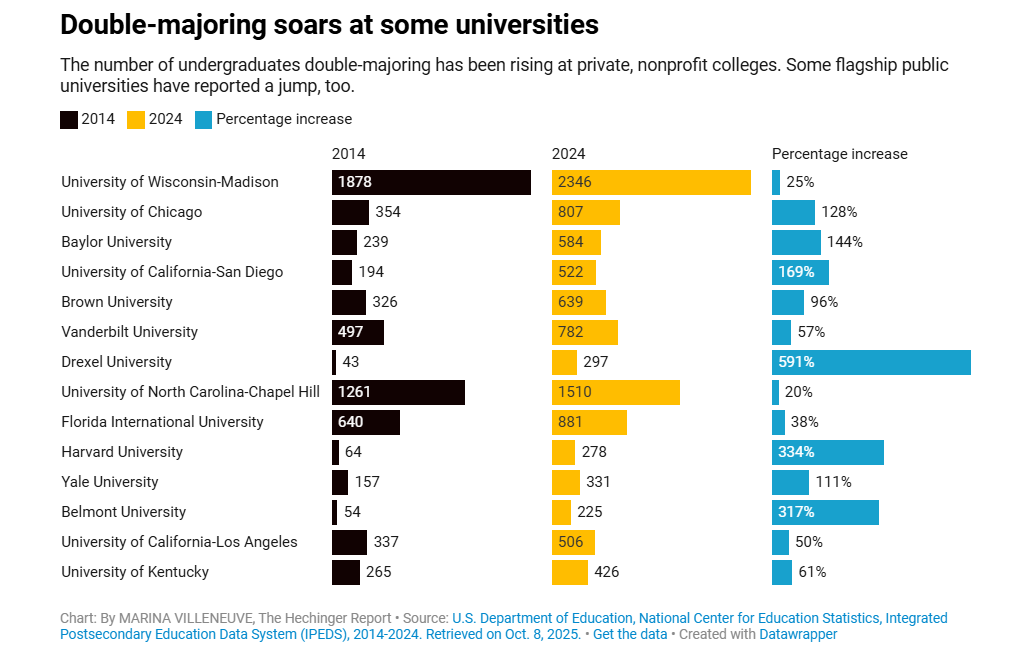
Applying to KAUST - Your Complete Guide for Masters & Ph.D. Programs (Upcoming Admissions)
Admissions Overview & Key Requirements

College students are no longer satisfied with just one major — and it’s not because they enjoy the extra workload. Faced with an unpredictable job market, the rise of artificial intelligence, and growing pressure to “stand out,” more undergraduates are doubling down on their degrees. Across the US, record numbers of students are graduating with two majors, hoping that more credentials will mean more control over an uncertain future.
The number of students at UW-Madison who double-major has grown by 25 percent over the last decade, the data show. But double-majoring is also on the rise at private, nonprofit colleges across the country, and at other public institutions, including the University of California, San Diego, and the University of North Carolina at Chapel Hill.
Nearly 5.4 million credentials — degrees or certificates — were earned by the 4.8 million college and university graduates in 2023-24, the most recent year for which the figure is available. That means about 12 percent left school with more than one, compared to 6 percent ten years earlier. Academic minors don’t count as a credential and aren’t tracked.
“Students are feeling a spiraling lack of control in a very dynamic labor market,” said Rachel Slama, associate director of Cornell University’s Future of Learning Lab. “They’re probably clinging to the one thing that’s in their control — the majors they choose. And they think that more is more.”

Research suggests they may be right. A 2016 study from St. Lawrence University and Vanderbilt Law School found that students who paired business with a STEM major earned more than those with only one of those disciplines. And a 2023 study from researchers at Ohio State and other universities found that double majors were 56 percent less likely to face layoffs or pay cuts during economic downturns.
Meanwhile, colleges and universities — traditionally slow to transform what and how they teach — are encouraging students to combine majors as a faster way to keep up with changes in the labor market, said Taylor Odle, an assistant professor at UW-Madison who studies the economics of education and the value of credentials in the workforce.
“Institutions are thinking strategically about how to align their degree programs with industry, and it might be by pairing two things they already have,” Odle said.
Double-majoring isn’t easy. It typically means earning more than the usual minimum number of credits required to graduate, on top of extracurricular and other obligations. Wesson, at UW-Madison, for instance, is an officer of student government, a reporter and photographer for the campus newspaper and an honors student.
Some separate majors have overlapping requirements. Even if they don’t, most universities and colleges charge the same tuition per semester no matter how many courses undergraduates take. So unless a second major extends the number of semesters a student needs to complete required courses, or forces him or her to take additional classes in the summers, double-majoring doesn’t typically cost more or take longer.
Meanwhile, more students are arriving at college having already knocked off credits by taking dual-enrollment and Advanced Placement classes in high school.
About 2.5 million high school students participate in dual enrollment, according to an analysis of federal data by the Community College Research Center at Teachers College, Columbia University. (The Hechinger Report, which produced this story, is an independent unit of Teachers College.)
This means they have room in their schedules in college for second majors, said Kelle Parsons, who focuses on higher education as a principal researcher at the American Institutes for Research.
For some students, double-majoring makes more sense than changing majors altogether. About 30 percent of students change their majors at least once, and 10 percent two or more times, according to the U.S. Department of Education. Adding a second major is less drastic than dropping a first one and starting again from scratch, said Patrick Denice, an associate professor of sociology at the University of Western Ontario.
“If you add a [second] major, you hedge your bets against a changing labor market without losing those credits and that coursework you’ve already earned” toward the first one, said Denice, who has studied why students at U.S. universities pick and change their majors.
The double-major boom is part of a broader move toward “stackable credentials” — short-term certificates that can be earned alongside degrees. In 2023–24, 17 percent of bachelor’s degree recipients also earned at least one certificate, according to the National Student Clearinghouse Research Center.
“These credentials have been talked about for a long time, and now there’s real demand,” said Ryan Lufkin, vice president of global academic strategy at the education technology firm Instructure.
Share

Applying to KAUST - Your Complete Guide for Masters & Ph.D. Programs (Upcoming Admissions)
Admissions Overview & Key Requirements

Erasmus Mundus Joint Master's 2026 (Upcoming Admissions)
Erasmus Mundus programs are scholarships available to students worldwide, offering fully-funded Master’s degrees to study in Europe!

Registration Opens for SAF 2025: International STEAM Azerbaijan Festival Welcomes Global Youth
The International STEAM Azerbaijan Festival (SAF) has officially opened registration for its 2025 edition!

KAIST International Graduate Admissions Spring 2026 in Korea (Fully Funded)
Applications are open for KAIST International Admissions for Master’s, Master’s-PhD Integrated, Ph.D., and Finance MBA

CIPS Youth Future Summit 2026 in Switzerland (Fully Funded Available)
Applications are Open for the CIPS Youth Future Summit in Switzerland for International Young Leaders and Changemakers

South Korea Leads OECD in Higher Education Completion for 17th Consecutive Year
With 56.2% of adults holding a college degree or higher, South Korea continues to lead the OECD in higher education attainment.